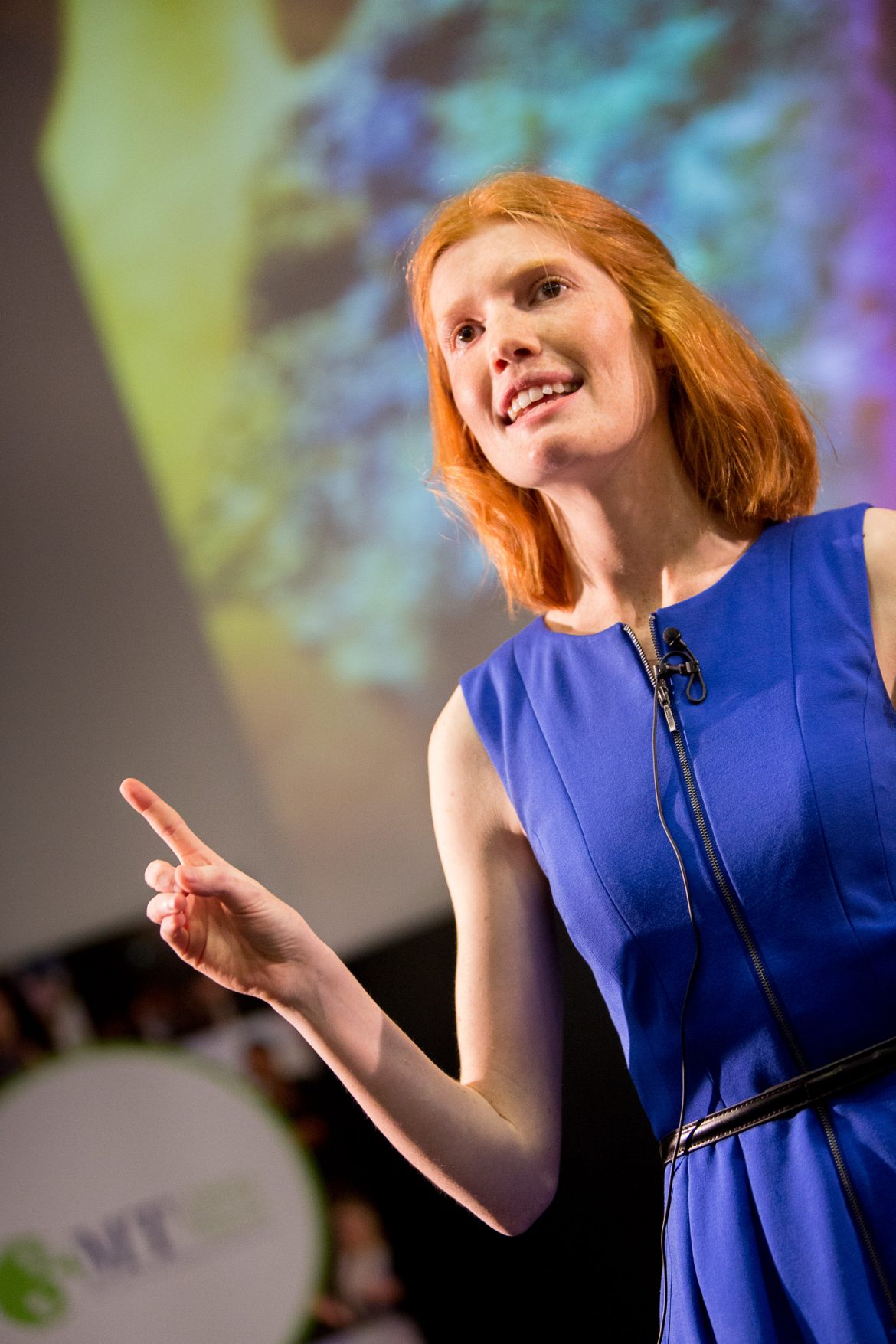Presenting my research to a general audience is … a skill which is seldom taught, but incredibly useful
NYSF 2008 Alumna and student staff leader Catherine Wheller was one of eight grand finalists to compete in The University of Melbourne’s Three Minute Thesis competition (3MT®) in September this year.
The Trans-Tasman Three Minute Thesis is an annual research communication competition developed by The University of Queensland celebrating the exciting research conducted by PhD students. The exercise cultivates students’ academic, presentation, and research communication skills, allowing the opportunity to develop their capacity to effectively explain their research in three minutes, in a language appropriate to a non-specialist audience.
“To reach the grand final, we went through initial heats, then semi-finals and then into the grand final. This was the final stage for me, however the winner of the grand final travelled to Queensland for the Trans-Tasman competition competing against winners from universities in Australia and New Zealand.”
Catherine’s presentation concentrated on the question of “Microscopic Evidence of Supercontinents, how do we uncover the evolution of the Earth's continents by the mineral assemblages that make up rocks?”

Catherine Wheller, 3MT
While travelling in the remote south of Madagascar last year for her research, Catherine picked up a rock. Under the microscope, she found that the rock’s mineral assemblage showed that it had been through an extraordinarily high temperature event around 520 million years ago.
“This is a remarkably different evolution than an average rock would have experienced, so what story has my rock recorded? This is around the time that the supercontinent of Gondwana was forming - so what I've found is evidence that the southern part of Madagascar was involved in a collision of two plates at this time. From studies like this around the world, we can really start to piece together past movements of our Earth's crust.”
Catherine has always enjoyed public speaking and teaching, but her audience has always been one educated or interested in her field. “Presenting my research to a general audience is a challenge that I was motivated to try because this is a skill which is seldom taught, but incredibly useful. I chose a degree that I am passionate about and it has allowed me to explore some incredibly remote and unique places, which I then use to investigate the evolution of our planet - and I want to communicate that.”
The competition was tough. Catherine was representing the University of Melbourne’s School of Earth Sciences in a competition dominated by biomedical students. “At this level you can expect a certain degree of competitiveness, however I was blown away by how willing everyone was to help each other. Some of us started a practice group during the heat stages of the competition and we gave each other tips on presentation style and content - I've made an incredible group of friends though this program.”
The University of Melbourne’s other competitors in the competition came from the Faculty of Science; Faculty of Medicine, Dentistry and Health Sciences; Faculty of Veterinary and Agricultural Sciences and Melbourne School of Engineering. Humanities and the Arts were well represented in the heats and semi-finals.
The Melbourne University competition winner was Eamonn Fahy who discussed early signs of glaucoma. He later won the grand final held at the University of Queensland in October.
Other topics included: the rise of the superbug (Claire Gorrie); The uses of spider silk in Kevlar (Steven Harris Wibowo); How much oxygen is needed to grow stem cells (Jarmon Lees); Malaria screening in women to prevent birth of premature babies (Kerryn Moore); Growing healthy wheat (Rebecca Vandegeer); and Shedding light on diabetic blindness (Sam Mills).
Watch Catherine’s 3MT here: https://www.youtube.com/watch?v=xhvFJKoUVtI
https://www.youtube.com/watch?v=xhvFJKoUVtI
Catherine’s Blog about field stories here: https://catinthefield.wordpress.com/.